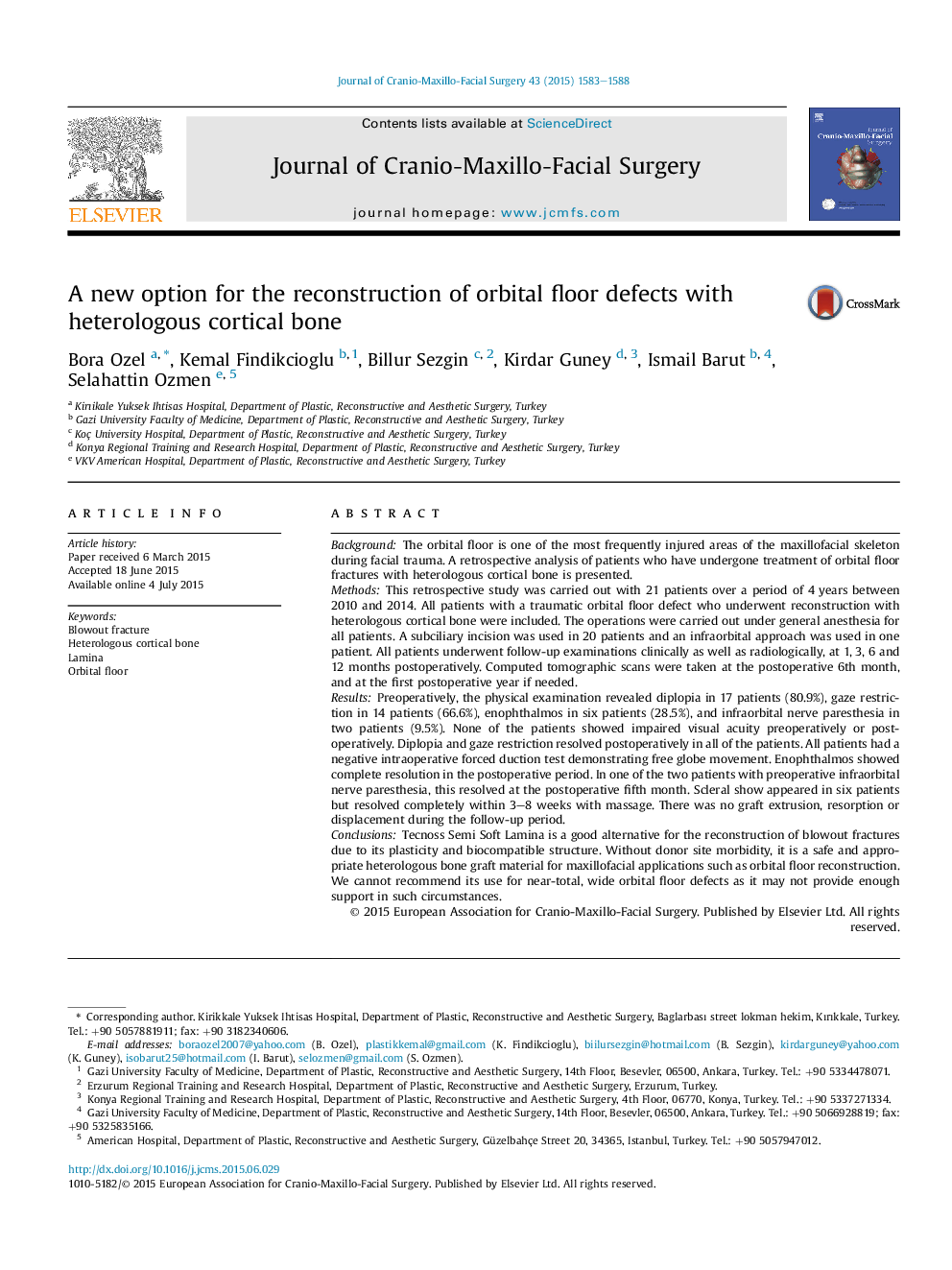| کد مقاله | کد نشریه | سال انتشار | مقاله انگلیسی | نسخه تمام متن |
|---|---|---|---|---|
| 3142425 | 1196783 | 2015 | 6 صفحه PDF | دانلود رایگان |
BackgroundThe orbital floor is one of the most frequently injured areas of the maxillofacial skeleton during facial trauma. A retrospective analysis of patients who have undergone treatment of orbital floor fractures with heterologous cortical bone is presented.MethodsThis retrospective study was carried out with 21 patients over a period of 4 years between 2010 and 2014. All patients with a traumatic orbital floor defect who underwent reconstruction with heterologous cortical bone were included. The operations were carried out under general anesthesia for all patients. A subciliary incision was used in 20 patients and an infraorbital approach was used in one patient. All patients underwent follow-up examinations clinically as well as radiologically, at 1, 3, 6 and 12 months postoperatively. Computed tomographic scans were taken at the postoperative 6th month, and at the first postoperative year if needed.ResultsPreoperatively, the physical examination revealed diplopia in 17 patients (80.9%), gaze restriction in 14 patients (66.6%), enophthalmos in six patients (28.5%), and infraorbital nerve paresthesia in two patients (9.5%). None of the patients showed impaired visual acuity preoperatively or postoperatively. Diplopia and gaze restriction resolved postoperatively in all of the patients. All patients had a negative intraoperative forced duction test demonstrating free globe movement. Enophthalmos showed complete resolution in the postoperative period. In one of the two patients with preoperative infraorbital nerve paresthesia, this resolved at the postoperative fifth month. Scleral show appeared in six patients but resolved completely within 3–8 weeks with massage. There was no graft extrusion, resorption or displacement during the follow-up period.ConclusionsTecnoss Semi Soft Lamina is a good alternative for the reconstruction of blowout fractures due to its plasticity and biocompatible structure. Without donor site morbidity, it is a safe and appropriate heterologous bone graft material for maxillofacial applications such as orbital floor reconstruction. We cannot recommend its use for near-total, wide orbital floor defects as it may not provide enough support in such circumstances.
Journal: Journal of Cranio-Maxillofacial Surgery - Volume 43, Issue 8, October 2015, Pages 1583–1588
